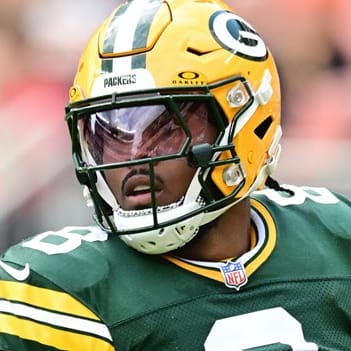This article is part of our Injury Analysis series.
Arian Foster
The Texans' running back reported to training camp in great shape, hoping to continue his impressive return from back surgery in 2013 and multiple lower extremity strains last season. Unfortunately for him, things didn't go as planned as Foster suffered a substantial groin injury in the team's first padded practice and has already undergone surgery to repair the area.
Initial reports had him sidelined up to three months but there might be reason for optimism given the most recent information. It appears Foster suffered an acute sports hernia. Generally, a sports hernia develops over time as repetitive forces placed through the individual's trunk are diverted into the groin and abdominal muscles. The excessive force results in micro-tears of tendon, muscle or ligaments in the area. However, like in the case of Foster, a sudden and violent motion can also result in a sports hernia as the same tissues are damaged in an isolated incident.
Once a sports hernia occurs, the abdominal wall and inguinal canal can become weakened allowing a hernia to develop and protrude through the area. However, not all injuries classified as sports hernias are accompanied by a true hernia.
Regardless of how the injury occurred, a sports hernia results in groin and abdominal pain while limiting lower leg and hip function. Surgery is often needed to return any protrusion to its normal orientation and/or address the damaged soft tissue. Fortunately, the procedure has a high success rate and players can be back as quickly as
Arian Foster
The Texans' running back reported to training camp in great shape, hoping to continue his impressive return from back surgery in 2013 and multiple lower extremity strains last season. Unfortunately for him, things didn't go as planned as Foster suffered a substantial groin injury in the team's first padded practice and has already undergone surgery to repair the area.
Initial reports had him sidelined up to three months but there might be reason for optimism given the most recent information. It appears Foster suffered an acute sports hernia. Generally, a sports hernia develops over time as repetitive forces placed through the individual's trunk are diverted into the groin and abdominal muscles. The excessive force results in micro-tears of tendon, muscle or ligaments in the area. However, like in the case of Foster, a sudden and violent motion can also result in a sports hernia as the same tissues are damaged in an isolated incident.
Once a sports hernia occurs, the abdominal wall and inguinal canal can become weakened allowing a hernia to develop and protrude through the area. However, not all injuries classified as sports hernias are accompanied by a true hernia.
Regardless of how the injury occurred, a sports hernia results in groin and abdominal pain while limiting lower leg and hip function. Surgery is often needed to return any protrusion to its normal orientation and/or address the damaged soft tissue. Fortunately, the procedure has a high success rate and players can be back as quickly as six weeks. However, determining when Foster will return isn't quite that easy, and reports varying from six weeks to three months have surfaced.
For starters, the term sports hernia is used to describe surgery to several muscles. Knowing it occurred to one of the muscles in the groin region helps, but only minimally. Then Foster's injury history has to be considered. He has endured injuries to groin, hip, knee, hamstring and back. All of these areas could directly be taxed by a rushed recovery. Finally, the precedent for NFL running backs doesn't offer much help either. Vikings running back Adrian Peterson underwent sports hernia surgery during the offseason in 2013 but had the benefit of an entire offseason to recover. The procedure was performed in February and Peterson was back in time for team workouts.
The best strategy for determining Foster's estimated return date may involve closely monitoring Houston's upcoming roster moves. Foster is a candidate for the injured reserve as "Designated for Return." However, the team won't have to make that decision until the day after the roster is cut to 53 players on Sept. 5. This gives the Texans and their medical team a full month to evaluate Foster's progress. If at that time Foster avoids being placed on the injured list that will suggest the Texans are confident their Pro Bowl running back can be back within the first eight games. However, if he were placed on IR he would not be eligible to return until Week 9, the same week Houston is on the bye. Therefore, a move to the IR will keep Foster out until at least Week 10.
It appears Foster is a speculative add at best who should probably be handcuffed to Alfred Blue or whoever emerges as the starter. Foster has had previous success returning from injury but remains a major injury risk.
Dallas Running Backs
The Cowboys were confident they could replace DeMarco Murray's production with a committee of running backs that included Joseph Randle, Darren McFadden and Lance Dunbar. All three, though, are sidelined with injury, leaving the first-team snaps to undrafted rookie Gus Johnson. Randle was considered the favorite to start but suffered what the team is calling a "slight" oblique strain during individual drills. He did not complete practice Monday and likely will be limited the next few days. McFadden's injury was somewhat expected as the former Raider suffered a hamstring strain during team workouts and started training camp on the PUP list. McFadden has shown a propensity for injuries since joining the league and has a lengthy history of hamstring problems, though he hopes to make his training camp debut over the weekend. Dunbar is still recovering from a sprained ankle but is progressing through rehab. For running backs, Randle's injury is the least likely to be a long-term issue, but any time he misses allows someone else the opportunity to make a play for a very available starting position.
The Dallas offense has the chance to be potent this season with a stout offensive line and a dynamic passing game in place. However, the running game remains the big question mark. Randle remains the guy to own, though the situation appears fluid. Don't be surprised if Dallas kicks the tires on a veteran running back like Pierre Thomas or Chris Johnson, especially if McFadden is unable to participate by the weekend.
LeSean McCoy
McCoy was hoping to bounce back from last season's up-and-down campaign in Philadelphia. However, his first year in Buffalo is starting off in similar fashion, as a toe injury and hamstring tightness are limiting the 27-year-old running back. McCoy suffered turf toe around this same time last year and struggled through the first five games of the year. Turf toe occurs when the big toe is forced into hyperextension, spraining a joint known as the metatarsophalangeal (MTP) joint. It is an extremely painful and limiting injury, especially for running backs. It often takes considerable time to completely heal and is easily aggravated. The turf toe alone would make me bump McCoy down a few spots on my draft board, but adding in a hamstring issue as well only solidifies the move. Like Dallas, Buffalo is struggling to keep running backs on the field, though McCoy remains the clear favorite when healthy.
Turf Burns
Dez Bryant: If the running-back issues weren't problematic enough, Dallas' top receiver has been grounded by a slight hamstring strain. Bryant is confident the injury is minor and he will be back on the field soon, and it shouldn't be surprising to see the Cowboys play it conservatively with a receiver who just signed a five-year $70 million contract. This injury could help out fantasy owners who may be able to land Bryant at a more palatable spot than his current average draft position.
Jeremy Maclin: The Chiefs' new receiver missed Monday's practice with a minor neck strain after injuring the area over the weekend. The team downplayed the severity of the ailment but will play it safe with their top downfield threat. The injury shouldn't affect Maclin's current ADP or value.
Shaun Suisham: The Steelers have to replace their kicker after Suisham suffered a torn ACL in the team's first preseason game. He is slated for surgery later this week and will miss the season. Billy Cundiff, Shayne Graham and several other veterans will get a look and should have plenty of value kicking behind the Steelers' offense.










